Royal Grammar School, Guildford
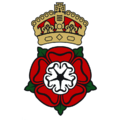 | |
| Established | 1509 |
|---|---|
| Type | Independent day school |
| Religion | Inter- / non- denominational [1][2] |
| Headmaster | Dr J M Cox |
| Chair of Governors | Cllr Mrs S K Creedy |
| Founder | Robert Beckingham |
| Location |
High Street Guildford Surrey GU1 3BB England |
| DfE number | 936/6534 |
| DfE URN | 125424 Tables |
| Staff | 100~ |
| Students | 900~ |
| Gender | Boys |
| Ages | 11–18 |
| Houses |
Austen Beckingham Hamonde Nettles Powell Valpy |
| Colours |
Red, Green, White |
| Publication | The Guildfordian |
| Former pupils | Old Guildfordians |
| School Hymn | "To Be a Pilgrim" |
| Website |
www |
The Royal Grammar School, Guildford (originally "The Free School"), commonly known as the RGS,[3] is a selective English independent day school for boys in Guildford, Surrey. The school dates its founding to the death of Robert Beckingham in 1509 who left provision in his will to 'make a free scole at the Towne of Guldford'; in 1512 a governing body was set up to form the school. The school moved to the present site in the upper High Street after the granting of a royal charter from King Edward VI in 1552.[4] The school's Old Building, constructed between 1557 and 1586, is the home of a rare example of a chained library. It was established on the death of John Parkhurst, Bishop of Norwich, in 1575.[5] Although defined as a "free" school, the first statutes of governance, approved in 1608, saw the introduction of school fees, at the rate of 4 shillings per annum, along with the school's first admissions test.[6] During the late 19th century the school ran into financial difficulty, which nearly resulted in the closure of the school. A number of rescue options were explored, including amalgamation with Archbishop Abbott's School. Funds were eventually raised, however, which allowed the school to remain open, although boarding was no longer offered.[7]
Fee paying continued until the school adopted voluntary controlled status under the Education Act 1944; thereafter tuition was free and the common entrance examination at 11 was introduced. Soon after, in 1958, the school expanded with the construction of the New Building in the grounds of Allen House, a building used for a number of years as a boarding house and later as classrooms. Allen House was later demolished in 1964 just after the completion of the New Building.[8] During December 1962 the historic Old Building caught fire, damaging a large part of it, including the two oldest rooms in the school. The damage was so great the reconstruction took over two years.[9] The school became independent and fee paying in 1977, when the parents and staff raised sufficient funds to purchase the school following concerns about the abolition of grammar school status with the introduction of comprehensive education.[10]
The school initially educated 30 of the "poorest men's sons",[11] though has since grown to have approximately 900 students, about 300 of whom are in the sixth form.[12] The majority of pupils, approximately two thirds, enter at age 11 in the first form, a few (3-5 pupils) enter in the second form at the age of 12, with the remainder entering at 13 in the third form. Admissions are based on an entrance examination set by the school, and an interview.[13] The school performs well academically, and as such is placed high on published league tables. A number of students achieve places at either Oxford or Cambridge universities.[14][15] The school partakes in a number of sporting activities, and has enjoyed some success, including finishing within the top two in the Daily Mail Cup twice.[16] The school maintains a grammar school ethos, and as such runs a number of outreach programmes for students from local maintained schools, for which it won the Independent School Award 2010 for Outstanding Community/ Public Benefit Initiative.[17] The Headmaster is a member of the Headmasters' and Headmistresses' Conference.[18]
History
The founding of the school dates to 1509 and the death of Robert Beckingham, a wealthy grocer, a member of the Worshipful Company of Grocers and a Freeman of the City of London. In his will he requested that the parishioners of St Olave's Church, Southwark, should obtain a licence to endow a chantry priest to say masses for his soul. If they failed to do this within two years of his death, his executors had discretion either to use the property to 'make a free scole at the Towne of Guldford' or to put the income to some other good charitable use.[7] The licence was not obtained within the required time, and so in 1512, Beckingham's executors formally conveyed the lands in the bequest to a body of trustees consisting of the Mayor of Guildford and four 'sad and discrete men' who had formerly been mayors. With the rents, they were to provide a free grammar school in Guildford with a 'sufficient schoolmaster',[10] to teach thirty "of the poorest-men's sons" to read and write English and cast accounts perfectly, so that they would be fit to become apprentices.[11] The school was built in 1520 in Castle Ditch (now Castle Street) with financial assistance from Guildford municipal corporation.[3]

Over the coming years the school ran into financial difficulty and so "The Mayor and Approved Men" of Guildford petitioned Edward VI to grant them further endowments for maintenance. One of the King's closest advisers, William Parr, had a particular affection for the town, having himself spent a large amount of time at the King's manor house in Guildford, and it was he who advised the King to re-appropriate some of the funds arising from the Abolition of the Chantries Acts to the school.[19] Thus in January 1552 Edward VI ordered that there was to be "one Grammar School in Guildford called the Free Grammar School of King Edward VI for the education, institution and instruction of boys and youths in Grammar at all future times forever to endure", along with a grant of 20 pounds per year; the school acquired therewith the right to style itself a Royal Grammar School. The high street site was purchased in 1555 with the construction of the Grade I listed Tudor Old Building[20] starting in 1557. Construction was completed in 1586.[7]
The death of John Parkhurst, the Bishop of Norwich, in 1575 resulted in the founding of the school's chained library.[21] In his will he gave "the most parte of all my Latten bookes whereof shall be made a catalogue as shortelie as I may God sendinge me lief",[5] although obtaining these books was not without its difficulties. Initially the executors of his will used "all the cullerable shifts and practices" to prevent the books from moving to the school. These continued to such an extent that the mayor was forced to complain to the Lord High Treasurer, William Cecil, who summoned the executors to London. Upon a hearing with the executors, the Lord Treasurer referred them to Sir Walter Mildmay who was Chancellor of the Exchequer at the time. He demanded that the executors give everything left in the Will to the school. Following the ruling, however, the books passed to Edmund Freke, the new Bishop of Norwich, who kept them for himself at his residence. This continued until the school obtained letters from Her Majesty's Privy Council requiring the books be delivered. The books then finally arrived at the school several years late, although the Bishop kept a number of the best for himself.[22] Since this date the library has been added to, most notably between 1600 and 1800.[23] The library is housed within the Gallery (now the Headmaster's Study) in the Old Building, with the present bookcases dating from 1897. The oldest book within the library was printed in Venice around 1480, with the oldest English book printed in about 1500 bearing the imprint of Wynkyn de Worde. Today the library is one of the few remaining examples of a chained library located within a school.[5]
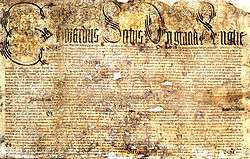
After the granting of the charter, it took 50 years before the first set of statutes to govern the school were completed. The Bishop of Winchester approved the statutes on 16 September 1608, and they constituted a major change in the way the school was run. Until this point the boys were instructed in English and accounting, but following the statutes lessons were in the subjects of Latin and Greek; with students required to speak in Latin unless licensed by the master to do otherwise. Admissions following the charter also changed, with "none to be admitted scholar into the said school before he be brought to the schoolmaster of that school, and upon his examination shall be found to have learned the rudiments of grammar, called the Accidence." All scholars from the town of Guildford were required to pay the master 5 shillings on admission to the school, and for those from outside the town the charge was 10s. The number of pupils at the school was capped at 100, although this number was rarely reached. The statues also saw the introduction of school fees. Although defined as a "free" school, fees were still charged at the rate of 4s. per annum, paid as 9d. per quarter for the provision of "rods and brooms", with an additional shilling due on the feast of St. Michael, which was used to pay for "clean, wax candles".[6]
On the death of Joseph Nettles (an old boy of the school) in 1691 the school's first university scholarship was founded. Nettles left eleven acres of land in his will to his daughter Elizabeth Brindley, then following her death to Sir Richard Onslow and his heirs, with the rents from the land to be paid to the school for the maintenance of a scholar at Oxford or Cambridge.[24][25] The scholar was to be a son of a freeman of the town of Guildford who "should have read some Greek author" and "be well instructed and knowing in the Latin tongue". His fitness in these fields was tested by the master of the school, and the rectors of the parishes of Stoke next Guildford and St. Nicholas in Guildford. If admitted to any college within the universities, he would then receive the rents from the lands for six years. At the end of six years, upon the scholar's death, or his removal from the university (whichever the sooner), another scholar was selected.[24] If no scholar was deemed suitable and a vacancy arose, then the next scholar selected would receive the standard yearly rate, along with any rents acquired during the vacancy. The rents arising from the lands were roughly £23 per year.[26] The scholarship ceased to be awarded at some point after 1951.[27]
In 1866 the then headmaster Revd Henry G Merriman (headmaster 1859–75) purchased Allen House, a large house set in extensive grounds which stood opposite the school. The house took its name from Anthony Allen, Master of Chancery and Mayor of Guildford in 1740.[28] This was initially used as a boarding house for the school between 1866–74 before later being purchased by Surrey County Council in 1921 and was used by the school until its demolition in 1964. The grounds surrounding the house were purchased in 1914 by HA Powell and donated to the school as playing fields.[8]
During the mid to late 19th century the school fell into disrepair and decay. Guildford Municipal Charities established a committee to report into the general condition of the school and the buildings. The committee reported in 1881 that the school had no funds available for repairs and that there were only nine boys "instead of the former ordinary number of 100".[7] Various suggestions were made by the Charity Commission to raise funds for the school, including a reorganisation with Archbishop Abbot's School. The Committee for Maintaining Higher Education in Guildford was established in March 1887 to oppose the Charity Commission's draft scheme to amalgamate the RGS, Nettle's Charity and Archbishop Abbot's School. The committee raised £2,238 15s. 4d. (approximately £108,000 in 2010) towards the restoration of the RGS, ensuring its survival.[7][29] A new Charity Commission scheme came into effect in November 1888 which resulted in the Old Building being restored, and the school's continuation as a day only school.[7] Several years later under the Education Act 1944 the school adopted voluntary controlled status; tuition was therefore free and entrance was to be by common examination at the age of eleven.[10]
The construction of the New Building started in 1958 in the grounds of Allen House and initially consisted of a gymnasium, assembly hall, dining hall and kitchens, caretaker's flat, staff common rooms, junior library, cloakrooms and changing rooms, eight classrooms, science lecture theatre, five science laboratories, geography and art rooms, and various offices, stores and smaller rooms arranged in a J shape. The construction of the initial building was finished in 1963.[8]
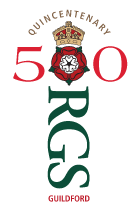
On the morning of Sunday 2 December 1962, a fire broke out in the Old Building. It caused widespread damage to a large part of the structure, including the two oldest rooms in the school, School Room and Big School. The main concern was to prevent the books contained within the chained library from being damaged, either by fire or water from the fire brigade's hoses. The damage to the building was so great that rebuilding took over 2 years, with the unusually cold winter of 1962–1963 delaying the restoration. Lessons, however, continued throughout on the Allen House side of the high street.[9]
The school became independent in 1977 when the parents and staff of the school, led by the Chairman of the Governors, John Fergrieve Brown, raised sufficient funds to purchase the school.[30] The RGS then withdrew from the government maintained system, becoming independent and fee paying. This was followed in 1978 by the purchase of Lanesborough Preparatory School which became the junior school, preparing boys for entry to the RGS at either 11 or 13.[10]
More recently in 2003 construction finished on a new Sports Centre with Fitness Suite and All Weather Training Area with Shooting Range.[31] Followed in 2006 with refurbishments to the Old Building site; the old gymnasium was converted into a Sixth Form Centre and the Victorian science laboratories (some of the earliest in the country)[10] converted into the Art School.
In 2009/2010 the school celebrated the quincentennial anniversary of the founding of the school by Robert Beckingham; numerous events were organised, including a new musical work based loosely on the school hymn "To be a Pilgrim".[32] This year also saw a visit from Princess Anne, The Princess Royal.[33][34]
RGS Guildford is due to open a campus in Doha, Qatar as part of Qatar's Outstanding Schools Program. RGS Guildford in Qatar will open initially to boys and girls ages three to seven years old (pre-school to year 2) in September, with the rest of the primary school slated to open in 2017. According to Bob Ukaih the school aims to open two separate single-sex secondary schools - one for girls and one for boys - in Doha by September 2018.[35][36][37]
October 2016 saw the opening of the John Brown building which was built replacing Trevone House for the Classics, Economics, History and Politics departments as well as for Design Technology. The building incorporates modern ecological deisgn with a roof garden and glass bridge connecting it to the first floor of the Main Building.[38]
Academic
The school has a First Form (Year 7) intake of four classes; followed by another intake in the Third Form (Year 9) of two classes, resulting in an average year size of 150, and a sixth form of about 300.[12] The pupil teacher ratio is approximately 10:1 and is low by general school standards. Class sizes range from twenty to twenty-five in the First Form through to GCSE, but are less than 16 by the final two years.[39]
Pupils are required to take at least ten GCSE subjects during Fourth and Fifth forms, which must include Biology, Chemistry, Physics, Mathematics, English Literature, English Language, a Modern Foreign Language and a Humanity (History, Religious Studies or Geography).[40] In recent years the school has been offering the IGCSE in Maths, Biology, Chemistry, Physics, Modern Languages, History and Technology.[41] Boys in the Sixth Form usually take four AS Levels and continue with three to A2 level.[42]
It features highly in published A-level and GCSE league tables for England and Wales.[14][43][44] Pupils at the school are very successful at gaining places at both Oxford and Cambridge universities; the school often features within the top 20 in the country with regards to number of places awarded.[15][45] The school also sends pupils to other universities, including Durham, Imperial and UCL.
School life
Terms
As in most schools in the UK there are three terms in the academic year:[46]
- The Michaelmas Term from early September to mid-December. This is the normal term for new boys to be admitted into the school
- The Lent Term from early January to a time a week or two before Easter falls that year
- The Trinity Term from mid-late April to early July, during which time boys sit most public exams
House system
There are six houses at the RGS, named after various benefactors of the school:
| House Name | House Colour | Benefactor |
|---|---|---|
| Austen | Yellow | John Austen |
| Beckingham | Red | Robert Beckingham |
| Hamonde | Dark Blue | William Hamonde |
| Nettles | Light Blue | Joseph Nettles |
| Powell | Maroon | Powell Family |
| Valpy | White | Arthur Valpy |
Each pupil is assigned to one of the six houses upon joining the school, and a pupil's house can be indicated to others by optional colour-related clothing.[47] If someone joins as the second in their direct family to do so, they are put in the same house as their relative. There are inter-house competitions throughout the year (including rugby, hockey, reading, and chess) and then at the end of the year the points awarded in each event throughout the year are added up, and the house with most points is awarded the Cock House Cup, which is the traditional name given in British public schools for the in-school competition cup.[48]
The school's official livery colour is green, picked as a house-neutral colour.
School uniform
The school's uniform up to the end of Fifth Form is a white shirt, dark or light grey trousers and a single-breasted navy blue school blazer. A grey or dark blue, v-neck pullover without sleeves may also be worn. For the lower and upper sixth, navy blue or grey suits are instead worn, and upper sixth formers are permitted to wear pastel shaded shirts.[47] A woollen scarf in the school colours: green, red and white; the sixth form scarf has longitudinal stripes. All years are required to wear one of the approved school ties. Various ties are awarded for sporting, artistic or social achievements, along with half and full colours awarded for services to the school and house colours awarded for services to the house; Senior Prefect ties are awarded to those with the position. Recently there have also been commemorative ties celebrating 450 years since the granting of the Royal Charter, and 500 years since the founding of the school.
Sport
Sport is compulsory for all years during games periods and if selected for a team can require compulsory attendance on Saturdays. A once pupil at the school, John Derrick, is connected with the earliest mention of cricket in England when, in a 1598 court case about an ownership dispute over a plot of common land in Guildford, he gave witness that when he was a scholar at the "Free School at Guildford", "hee and diverse of his fellows did runne and play [on the common land] at creckett and other plaies."[49][50][51][52]
- In the Michaelmas term rugby union is the main sport, hockey is also played.
- In the Lent term hockey is the main sport, rugby sevens is also played
- In the Trinity term cricket is the main sport, athletics is an option.
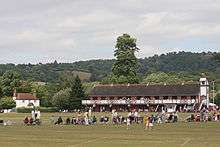
The sports of badminton, cross country running, fencing, football, golf, judo, rowing, sailing, swimming and tennis are available, the list varies by year and term.[53] Sixth form also have a "Spectrum" games option where boys are permitted to use any of the facilities at Guildford Spectrum during the games period.
The sport of target rifle shooting is an option among those in the 3rd year and above, but only available to members of the CCF. In the first and second years, before the CCF is an option, there is an air rifle club, which teaches basics before moving onto " rifles. The shooting team have had a lot of success, not only winning both major smallbore competitions, the Staniforth and the Country Life, but also finishing an impressive second at fullbore in the Ashburton at the Annual Schools Meeting held at Bisley.
The school has enjoyed some success in rugby where it has had first and second places at various levels of the Daily Mail Cup.[16]
On 6 February 2016, Jack Clifford became the first Old Guildfordian to become a full England rugby international when he made his full debut as a replacement for Chris Robshaw during the Calcutta Cup match on 6 February 2016 after 69 minutes.[54]
Since 2003 the six Royal Grammar Schools (Colchester, High Wycombe, Guildford, Lancaster, Newcastle, Worcester) have held the "RGS Cricket Festival", hosted by a different school each year. It is based on a round robin format and held over a period of five days towards the end of the Trinity term.[55]
The school has no playing fields on the town centre site. A 20 acres (8.1 ha) ground called Bradstone Brook, located a few miles away in the village of Chilworth, is the location of the rugby and cricket pitches. There is a single AstroTurf located at the main school for hockey and football. The majority of hockey takes place at Guildford Hockey Club, located at Broadwater School in Farncombe or Surrey Sports Park. Athletics and swimming both take place at Guildford Spectrum.[53]
Extra-curricular activities
- Music
Music is part of the core curriculum for first to third forms. Pupils take lessons with peripatetic music staff within different disciplines. There is a symphony orchestra composed of students, along with several other smaller classical ensembles. In addition to classical music, there are also a number of jazz and rock bands within the school as well, and to recognise this in addition to the four main music prizes awarded each year, there is an additional contemporary music prize.[56]
- Drama
Drama is offered as an academic subject from the first form,[57] but as well as this numerous plays are staged throughout the year for all year groups in association with local girls schools. The department has a state-of-the-art auditorium which was converted from the old gymnasium as well as a studio called the Hansford Room sited in the North Building.[58]
- Period 8
Period 8 is a specific set of extra-curricular activities which includes a Combined Cadet Force, outdoor pursuits, Scouts, lifesaving and community service. There are five field days in the year, on which these activities especially take place. Before the third form, pupils have the opportunity to decide between the CCF, outdoor pursuits and the scouts. The Duke of Edinburgh's Award scheme is 'Hors Combat' for choice, being available to all students, regardless of their other options, so no longer officially constitutes part of period 8.[59]
- Clubs and societies
There are several dozen clubs and societies at the school,[60][61] many of these are where pupils get together to discuss a topic of particular interest sometimes with a guest speaker. Past speakers include the ex-government drug adviser Professor David Nutt . There are a wide variety of different societies ranging from the normal such as badminton and Amnesty International to the more obscure like "Quirks and Remnants" and the "RumDoodle Society".
- Publications
The Register (originally Really Good Stuff) is a termly newsletter documenting significant achievements at the school.[62]
Admission and fees
Initially tuition at the school was free, funded by various endowments and rents obtained from lands the most significant arising from the Abolition of the Chantries Acts,[7] and the re-appropriation of funds to the school. In 1944 under the Education Act education remained free, however the common entrance exam at eleven was introduced and the school became a selective grammar school.[10] School fees were introduced in 1977 when the school withdrew from the maintained system and became independent. For the year 2013/2014 they are £14,670 (approximately €17,900 or US$24,500 as of March 2014)[63] per year excluding lunches. All those wishing to be admitted now take the schools own internal 11+ entrance examination which tests English, mathematics and verbal reasoning and attend an interview with two members of staff. If a place is awarded, entry can de deferred for two years so that boys who are at prep school may enter at thirteen. Those entering at thirteen must take the 13+ Common Entrance or the scholarship examination to confirm their place.[13]
Numerous scholarships are available at both 11+ and 13+ for music, academic achievement, and one for art at thirteen. Music and academic scholarships range in value between 5%–20% with one Kings Scholarship available for a 20% reduction in fees. These scholarships are awarded based on performance in subject specific exams or performances, and an interview with the headmaster for academic or music scholarships, or the presentation of a portfolio of work for the art scholarship.[13] Until the start of the 2009/2010 academic year, the value of scholarships was substantially higher with the King's Scholarships worth 50% of the fees and a range of lower scholarships between 10–30%.[13][64]
Charitable status and public benefit
The school is a registered charity and currently has three charities registered with the Charities Commission: King Edward VI's Grammar School (The Royal Grammar School), Guildford,[65] The Royal Grammar School Guildford (representing the governors),[66] and The Royal Grammar School Guildford Foundation[67] After the withdrawal of the Assisted Places Scheme in 1997 the social diversity of the school decreased, as a result the school began to offer bursaries to students whose parents could not afford the fees,[68] with the first bursary offered in 2007.[69]
The school also runs numerous outreach programmes for children from maintained schools in the local area, including a series of master-classes in science, mathematics, technology, languages and drama for local primary school children. Also for primary school children is the Tudor Experience Project where students can explore the Tudor past of the school through a number of activities. At the higher end of the school, numerous careers and university seminars are run for sixth form students from the local area, in addition to Oxbridge preparation classes and practice interviews for local sixth form students.[70] The school also runs several more outreach programmes, and as a result of these initiatives was recently awarded the Independent School Award 2010 for Outstanding Community/Public Benefit Initiative.[17]
Headmasters
The post of headmaster (schoolmaster or just master as it was originally known) was created following the grant of the Royal Charter in 1552, with the first appointment made in 1554. There have been 35 appointments since the creation of the position.[71] Until the re-organisation of the school in 1888 the post was almost exclusively filled by men from a religious background, with the first headmaster being Sir Lawson, a friar from the monastery in Guildford that was dissolved in 1538.[72] The most notable headmaster was Roger Goad (1569–1575), who was Provost of Kings College, Cambridge and three times Vice-Chancellor of the University of Cambridge;[73] he was headmaster during the time when George Abbot (Archbishop of Canterbury 1611–1633) was at the school.[74]
Former pupils

Former pupils of the school are referred to as "Old Guildfordians" and are often referred to as "OGs" in official school correspondence.[75] Since the school's founding, notable alumni have included the 75th Archbishop of Canterbury, Olympic athletes, the longest serving speaker of the House of Commons of the United Kingdom, several members of the parliament of the United Kingdom, a founding member of the East India Company and the 11th Premier of New Zealand.
Old Guildfordians
| Image | Name | Leaving year | Notes | |
|---|---|---|---|---|
 |
George Abbot | 1578 | An English divine, who served as the 75th Archbishop of Canterbury and the fourth Chancellor of Trinity College, Dublin. He also founded The Hospital of the Blessed Trinity, an alms house situated on the High Street in Guildford, Surrey. | [76][77][78] |
| — | Sir Maurice Abbot | — | A British merchant who was Lord Mayor of London in 1638. He was an original member of the East India Company and was involved in the settling of the colony of Virginia in 1624. | [77][79] |
 |
Robert Abbot | 1577 | An Anglican clergyman and brother of George Abbot. Robert was elected master of Balliol College, Oxford in 1609, and subsequently Bishop of Salisbury from 1615–17. | [77][78][80] |
| — | Sir John Allison | 1961 | Air Chief Marshal in the Royal Air Force, and Gentleman Usher to the Sword of State. He is also a Knight Commander in the Order of the Bath and a Commander of the Order of the British Empire. | [81][82] |
| — | Alan Bennett | 1945 | English playwright, screenwriter, actor and author. | [83] |
| — | Gareth Bennett | 1943 | Anglican clergyman and academic who committed suicide in the wake of media reactions to an anonymous preface he wrote for Crockford's Clerical Directory. | [84] |
| Simon Bird | 2003 | An actor, writer and comedian, who is best known for playing Will McKenzie in the BAFTA-winning TV comedy The Inbetweeners produced by Channel E4. | [85] | |
 |
Jean-Jacques Burnel | 1968 | Musician, producer, songwriter and bass guitarist with the British rock band The Stranglers. | [86] |
| — | John Rand Capron | c.1845 | An English amateur scientist, astronomer and photographer. Though a solicitor by profession, he became an expert on spectroscopy, particularly in relation to the aurora, and published many articles during his lifetime. | [87] |
.jpg) |
Jack Clifford | 2011 | Jack Clifford (born 12 February 1993) is a rugby union player for the England national rugby union team and Aviva Premiership side Harlequins FC. He made his debut as a full England international in the Calcutta Cup match against Scotland on 6th February, 2016. He is the RGS's first full England rugby international. | [88] |
| — | Leonard Colebrook | 1896 | An English physician and bacteriologist who introduced a number of measures to improve cleanliness in hospitals, and discovered the cure for puerperal fever. | [89][90] |
| — | Henry Cotton | c.1566 | An English bishop, who became Bishop of Salisbury in 1598. He was also godson to Elizabeth I and one of her personal chaplains. | [78][91][92] |
| — | William Cotton | — | An English bishop, who became Bishop of Exeter in 1598. | [77][78] |
| — | John Derrick | c.1555 | Queen's coroner for Surrey who made a legal deposition containing the first reference to cricket in the English language. | [93] |
 |
Lt.-Gen. Sir William Thomas Furse | 1883 | Lieutenant-General in the British Army and Master-General of the Ordnance. | [78] |
 |
Lt.-Col. Henry Haversham Godwin-Austen | 1851 | English topographer, geologist and surveyor. First explorer of the second highest mountain on Earth, K2 (formerly Mt. Godwin-Austen). | [94] |
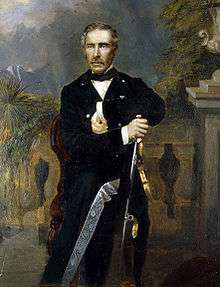 |
Sir George Grey | 1826 | Soldier, explorer, Governor of South Australia, twice Governor of New Zealand, Governor of Cape Colony (South Africa), and the 11th Prime Minister of New Zealand. | [95][96] |
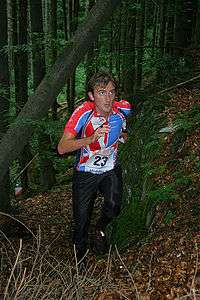 |
Graham Gristwood | 2002 | Orienteering world relay champion in 2008. | [97] |
| — | Professor Andrew D. Hamilton | 1971 | Former Provost of Yale University, Vice-Chancellor of University of Oxford. | [75][98][99] |
| — | Professor Peter Haynes | - | Head of Department at DAMTP University of Cambridge. | [100] |
| Robert Horne | — | A leading Protestant reformist, and one of the Marian exiles who fled to the continent during the reign of Mary I of England. He was subsequently Bishop of Winchester. | [78] | |
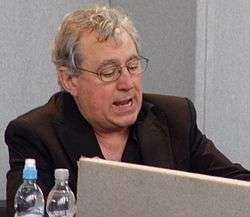 |
Terry Jones | 1961 | A Welsh comedian, screenwriter, actor and film director, known for his roles in the Monty Python's Flying Circus television series, and the film Monty Python's Life of Brian. | [101][102] |
| — | Lord Mark Kerr | 1801 | Admiral in the Royal Navy. Son of the fifth Marquess of Lothian. | [78][103] |
| Arthur Knight | — | Captain of England association football team & Olympic gold medalist in 1912. | [104] | |
| — | Mark Lambert | 2003 | Harlequins and England U-21 rugby union international. | [105][106] |
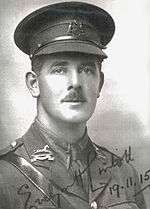 |
Evelyn Lintott | — | England association football international and Lieutenant in the British Army. | [107] |
 |
Admiral of the Fleet Sir Thomas Byam Martin | — | Admiral in the Royal Navy who served during both the French Revolutionary and Napoleonic Wars, who was credited for reforming and modernising the Royal Navy. He was also the Member of Parliament for Plymouth, but was dismissed as comptroller of the Navy by King William IV for criticising attempts to reduce the Navy budget. | [108][109] |
 |
Conway Lloyd Morgan | 1869 | Comparative psychologist and philosopher, Vice-Chancellor of University of Bristol. | [110] |
 |
Arthur Onslow | 1709 | Politician and the longest serving Speaker of the House of Commons. | [111] |
| — | John Parkhurst | c.1525 | An English Marian exile and subsequently Bishop of Norwich. | [77][112] |
| — | Robert Parkhurst | c.1585 | English merchant who was elected Lord Mayor of London in 1635. | [77][113] |
| — | Maurice Pryce | 1929 | Wykeham Professor of Physics | [114] |
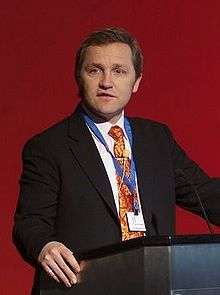 |
James Purnell | 1988 | Member of the UK parliament and served in the Cabinet as Secretary of State for Work and Pensions and Secretary of State for Culture, Media and Sport. | [115][116] |
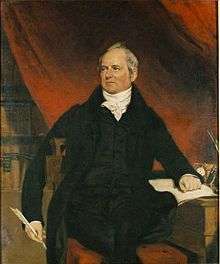 |
John Rickman | 1785 | English government official and statistician who created the census in 1800. | [117][118] |
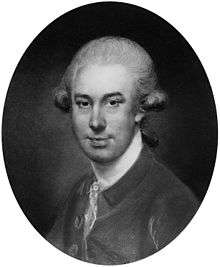 |
John Russell | — | Painter and a member of the Royal Academy. | [119][120][121] |
| — | Sir Philip Sales | — | Lord Justice of Appeal | [122] |
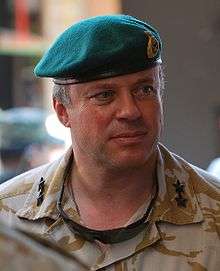 |
Major-General Andy Salmon | 1975 | Commandant General Royal Marines from June 2009 until February 2010. | [78][123] |
| — | Mackenzie Taylor | c.1996 | A British comic, writer and director with bipolar schizoaffective disorder, who committed suicide in 2010 aged 32. | [124] |
 |
Martin Tyler | 1964 | An English football commentator with Sky Sports who was voted as the FA Premier League "Commentator of the Decade". | [78][125][126] |
| — | Victor Willing | 1945 | A British painter, who attended the Slade School of Fine Art. His work was mainly abstract in style. | [127] |
 |
Bob Willis | 1968 | England cricket captain, who is, as of 2015, England's third-highest wicket taker, behind James Anderson and Ian Botham. Willis also works as a Sky Sports cricket commentator with Botham. | [78][125][128] |
| — | Peter Zinovieff | c.1947 | Founder of Electronic Music Studios. | [129] |
"—" indicates year of leaving is unknown.
See also
References
- ↑ http://www.education.gov.uk/edubase/establishment/summary.xhtml?urn=125424
- ↑ http://schoolsfinder.direct.gov.uk/9366534/overview/
- 1 2 W C. Smith (1828). Rambles round Guildford. p. 78. Retrieved 2011-03-04.
- ↑ Russel, p94
- 1 2 3 "Chained Library". Royal Grammar School Website. Retrieved 4 February 2011.
- 1 2 Brayley, p371
- 1 2 3 4 5 6 7 "Royal Grammar School (formerly the Free Grammar School of King Edward VI), Guildford: Recorder, 1553–1965". Surrey History: Exploring Surrey's Past. Retrieved 20 December 2010.
- 1 2 3 "Buildings". Royal Grammar School Website. Retrieved 2010-12-20.
- 1 2 "RGS Foundation Newsletter 2" (PDF). Retrieved 2010-12-20.
- 1 2 3 4 5 6 "Brief History of the School". Royal Grammar School Website. Retrieved 20 December 2010.
- 1 2 Brayley, p370
- 1 2 "Royal Grammar School, Guildford Report 2007" (PDF). ISI Inspection Report. Independent Schools Inspectorate. Retrieved 28 February 2011.
- 1 2 3 4 "RGS Admissions Policy and Protocol 2009/2010" (PDF). Royal Grammar School Website. Retrieved 23 December 2010.
- 1 2 "Independent School League Tables". Daily Mail. 2010. Retrieved 2010-12-20.
- 1 2 Nick Collins, Becky Ratcliffe and Tom Rowley (28 October 2010). "Pupils from elite schools secure one in ten Oxford places". The Telegraph. London. Retrieved 22 December 2010.
- 1 2 "Daily Mail Cup Results Archive". Schools Rugby. Retrieved 23 December 2010.
- 1 2 "Outstanding Community/Public Benefit Initiative – Independent School Awards". Funding for Independent Schools. Retrieved 29 December 2010.
- ↑ "HMC Schools Q-S". HMC Website. Headmasters' and Headmistress' Conference. Retrieved 28 February 2011.
- ↑ Russel, p.97
- ↑ "The Grammar School, Guildford". Heritage Gateway. Retrieved 26 December 2010.
- ↑ Brayley, p70
- ↑ Russell, p100
- ↑ Cambray, p554
- 1 2 Gilbert, p253
- ↑ Wright, p314
- ↑ Gilbert, p254
- ↑ "Prize and Exhibition finances". National Archives Online. The National Archives. Retrieved 4 March 2011.
- ↑ "Allen House Guildford". Exploring Surrey's Past. Surrey History Centre. Retrieved 28 February 2011.
- ↑ "Currency Converter". The National Archives Website. The National Archives. Retrieved 4 February 2011.
- ↑ RGS 500, roundandaboutssh.co.uk, Tinx Newton, November 2009
- ↑ "Newsletter 1" (PDF). RGS Foundation Bulletin. Royal Grammar School Foundation. Retrieved 28 February 2011.
- ↑ Millers, Vita (12 March 2010). "Teacher set for Guildford Cathedral music premiere". Get Surrey Online. Guildford. Retrieved 20 December 2010.
- ↑ "Princess visits 500-year-old Royal Grammar School". Get Surrey Online. Guildford. 14 May 2010. Retrieved 20 December 2010.
- ↑ "List of Royal Engagements". 31 March 2010. Retrieved 22 December 2010.
- ↑ http://dohanews.co/two-new-british-schools-to-open-in-qatar-this-september/
- ↑ http://www.rgs-guildford.co.uk/media/news/article/3132/International-Partnership
- ↑ http://www.gulf-times.com/story/490182/RGS-Guildford-set-for-new-chapter-in-Qatar
- ↑ "Bulletin 97: John Brown Building" (PDF).
- ↑ "RGS Guildford". Prep Review. 2006. Retrieved 29 December 2010.
- ↑ "Middle School". Royal Grammar School Website. Retrieved 29 December 2010.
- ↑ "Public Exam Boards". Royal Grammar School Website. Retrieved 29 December 2010.
- ↑ "Senior School (Sixth Form)". Royal Grammar School Website. Retrieved 29 December 2010.
- ↑ "Financial Times Top 1000 Schools" (PDF). Financial Times. 21 March 2009. Retrieved 4 March 2011.
- ↑ "Top 1,000 Schools – Special Report" (PDF). Financial Times. 20 March 2010. Retrieved 4 March 2011.
- ↑ Woolcock, Nicola (20 September 2007). "Handful of independent schools seize a third of Oxbridge places". The Times. London. Retrieved 22 December 2010.
- ↑ "Term Dates". Royal Grammar School Website. Retrieved 22 December 2010.
- 1 2 "School Uniform". Royal Grammar School Website. Retrieved 22 December 2010.
- ↑ J. A. Mangan (29 September 2000). Athleticism in the Victorian and Edwardian public school. Routledge, 2000. p. 152. ISBN 978-0-7146-8043-9. Retrieved 2011-03-05.
- ↑ Charles Box (1868). The theory and practice of cricket, from its origin to the present time. Frederick Warne, 1868. pp. 11–12. Retrieved 2011-03-03.
- ↑ Russel, p.203
- ↑ "ESPN CricInfo – History". Retrieved 26 December 2010.
- ↑ Collins, p80
- 1 2 "Sport". Royal Grammar School Website. Retrieved 25 December 2010.
- ↑ "Jack Nowell's try seals winning start for Eddie Jones's England in Scotland". The Guardian. 6 February 2016. Retrieved 6 February 2016.
- ↑ Feldberg, Alan (23 June 2009). "RGS festival of cricket coming to Wycombe". Bucks Free Press. Beaconsfield. Retrieved 20 December 2010.
- ↑ "Music". Royal Grammar School Website. Retrieved 29 December 2010.
- ↑ "Drama". Royal Grammar School Website. Retrieved 29 December 2010.
- ↑ "Drama". Royal Grammar School Website. Retrieved 23 December 2010.
- ↑ "Monday Period 8". Royal Grammar School Website. Retrieved 23 December 2010.
- ↑ "Clubs and Societies". Royal Grammar School Website. Retrieved 23 December 2010.
- ↑ "Societies List". Royal Grammar School Website. Retrieved 23 December 2010.
- ↑ "Royal Grammar School, Guildford – Newsletters". www.rgs-guildford.co.uk. Retrieved 2011-03-05.
- ↑ "School Fees". Royal Grammar School Website. Retrieved 23 December 2010.
- ↑ "RGS Music Department Blog". Guildford. 8 July 2010. Retrieved 23 December 2010.
- ↑ "King Edward VI's Grammar School – No. 312028". Charities Commission. Retrieved 28 December 2010.
- ↑ "The Royal Grammar School Guildford – No. 1084866". Charities Commission. Retrieved 28 December 2010.
- ↑ "The Royal Grammar School Foundation – No. 1089955". Charities Commission. Retrieved 28 December 2010.
- ↑ "Bursaries". Royal Grammar School Website. Retrieved 29 December 2010.
- ↑ "RGS Foundation Newsletter 10" (PDF). Royal Grammar School Website. Retrieved 29 December 2010.
- ↑ "Public Benefit + Outreach Programmes". Royal Grammar School Website. Retrieved 29 December 2010.
- ↑ "About the RGS". Royal Grammar School Website. Retrieved 22 December 2010.
- ↑ Guildford Borough Council. "Education in Guildford". Guildford Borough Council Website. Retrieved 5 February 2011.
- ↑ "Roger Goad". Oxford Dictionary of National Biography (Requires Subscription). Retrieved 5 February 2011.
- ↑ "George Abbott (Archbishop)". Oxford Dictionary of National Biography (Requires Subscription). Retrieved 5 February 2011.
- 1 2 "Foundation Bulletin No. 12" (pdf). RGS Foundation Bulletin. Royal Grammar School Foundation. Retrieved 2 June 2011.
- ↑ "George Abbott (Archbishop)". Oxford Dictionary of National Biography (subscription required). Retrieved 5 February 2011.
- 1 2 3 4 5 6 Urban, Sylvanis (1824). The Gentleman's magazine, Volume 94, Part 1. London: John Nichols & Son. p. 502. Retrieved 7 July 2011.
- 1 2 3 4 5 6 7 8 9 10 "Distinguished Old Guildfordians". Royal Grammar School Website. Royal Grammar School, Guildford. Retrieved 6 March 2011.
- ↑ "Abbot, Maurice". Dictionary of National Biography, 1885–1900. Smith Elder & Co. Retrieved 6 March 2011.
- ↑ "Abbot, Robert". Oxford Dictionary of National Biography (subscription requir.
- ↑ "Distinguished Old Guildfordians – Sir John Allison". Royal Grammar School Website. Royal Grammar School, Guildford. Retrieved 6 March 2011.
- ↑ "Sir John Allison". The School of Coaching Website. Retrieved 27 June 2011.
- ↑ Reported by Alan Bennett himself in an interview on Start The Week, BBC Radio 4, Monday 31 October 2016
- ↑ "Bennett Gareth". Oxford Dictionary of National Biography (subscription required). Oxford University Press. Retrieved 6 March 2011.
- ↑ "Inbetweeners star hands out prizes at old school". Surrey Advertiser. Guildford. 29 September 2010. Retrieved 29 December 2010.
- ↑ Buckley, David (1997). No Mercy – The Authorised and Uncensored Biography of The Stranglers. London: Hodder and Stoughton. p. 17. ISBN 0-340-68062-8.
- ↑ "Monthly Notices of the Royal Astronomical Society". Assets and property of the Society. 49: 159. February 1889.
- ↑ "The Register. THE NEWSLETTER OF THE ROYAL GRAMMAR SCHOOL GUILDFORD" (PDF). Guildford. 2011. Retrieved 6 February 2016.
- ↑ "Colebrook, Leonard". Oxford Dictionary of National Biography (subscription required). Oxford University Press. Retrieved 6 March 2011.
- ↑ Dunn, P M (4 September 2006). "Dr Leonard Colebrook, FRS (1883–1967) and the chemotherapeutic conquest of puerperal infection". Archives of Disease in Childhood: Fetal and Neonatal Edition. 93 (3): F246–F248. doi:10.1136/adc.2006.104448. PMID 18426926. Retrieved 6 March 2011.
- ↑ White, Francis Overand (1898). Lives of the Elizabethan bishops of the Anglican church. London: Skeffington. pp. 397–399.
- ↑ Russel, J. & S. (1801). The History of Guildford, the County-Town of Surrey. Fleet Street, London. p. 119. Retrieved 4 June 2011.
- ↑ Altham, H. S. (1962). A History of Cricket, Volume 1 (to 1914). George Allen & Unwin. p. 21.
- ↑ "More Info". Spirit on Adventure Website. Retrieved 7 December 2011.
- ↑ "Distinguished Old Guildfordians – Sir George Grey". Royal Grammar School Guildford Website. Retrieved 7 February 2011.
- ↑ Williamson G.C. (1904). Guildford in the olden time: side-lights on the history of a quaint old town. G. Bell. p. 104. Retrieved 3 July 2011.
- ↑ "Athletics". Royal Grammar School Website. Royal Grammar School, Guildford. Retrieved 6 March 2011.
- ↑ "Distinguished Old Guildfordians – Andrew Hamilton". Royal Grammar School Website. Royal Grammar School, Guildford. Retrieved 6 March 2011.
- ↑ Curtis, Polly (1 October 2009). "Short-term thinking out as Ivy League comes to Oxford". The Guardian. Retrieved 27 June 2011.
- ↑ http://www.damtp.cam.ac.uk/people/p.h.haynes/
- ↑ "Distinguished Old Guildfordians – Terry Jones". Royal Grammar School Website. Royal Grammar School, Guildford. Retrieved 5 March 2011.
- ↑ "BBC Wales – Arts – Terry Jones". Wales Arts. British Broadcasting Corporation. 7 October 2009. Retrieved 27 June 2011.
- ↑ "The Illustrated London news". 234. London: The Illustrated London News & Sketch Ltd. 1959: 328.
- ↑ "Arthur Knight Biography and Olympic Results". Sports Reference – Olympic Sports. Retrieved 6 March 2011.
- ↑ "Issue 14" (pdf). RGS Foundation Bulletin. Royal Grammar School Guildford Foundation. Retrieved 6 March 2011.
- ↑ Alexander, Brian (February 2011). "Top of their class" (PDF). essence Magazine. Surrey. p. 10. Archived from the original (pdf) on February 2011. Retrieved 27 June 2011.
- ↑ "QPR Hall of Fame". Retrieved 15 February 2011.
- ↑ "Distinguished Old Guildfordians – Sir Thomas Byam Martin". Royal Grammar School Website. Royal Grammar School, Guildford. Retrieved 6 March 2011.
- ↑ "Martin, Sir Thomas Byam". Oxford Dictionary of National Biography (subscription required). Oxford University Press. Retrieved 27 June 2011.
- ↑ "Conway Lloyd Morgan". Oxford Dictionary of National Biography (subscription required). Oxford University Press. Retrieved 5 March 2011.
- ↑ "Distinguished Old Guildfordians – Arthur Onslow". Royal Grammar School Guildford Website. Retrieved 7 February 2010.
- ↑ Russel, J. & S. (1801). The History of Guildford, the County-Town of Surrey. Fleet Street, London. p. 115. Retrieved 4 June 2011.
- ↑ Brayley E. W. Britton J. Mantell G. A. (1841). A Topographical History of Surrey, Volume 1, Part 2. London: Tilt & Bouge, Fleet Street. p. 345.
- ↑ R. Elliott and J. H. Sanders (December 2005). "Biographical Memoirs of Fellows of the Royal Society" (PDF). 51: 357. doi:10.1098/rsbm.2005.0023. Retrieved 13 August 2012.
- ↑ Thomson, Alice; Sylvester, Rachel (5 July 2008). "James Purnell: Cabinet's youngest star wants work for all – but what job would he like?". The Times. Retrieved 6 March 2011.
- ↑ "James Purnell: a profile". The Telegraph. 5 June 2009. Retrieved 6 March 2011.
- ↑ "Rickman, John". Oxford Dictionary of National Biography (subscription required). Oxford University Press. Retrieved 6 March 2011.
- ↑
 Stephen, Leslie (1896). "Rickman, John". In Lee, Sidney. Dictionary of National Biography. 48. London: Smith, Elder & Co.
Stephen, Leslie (1896). "Rickman, John". In Lee, Sidney. Dictionary of National Biography. 48. London: Smith, Elder & Co. - ↑ "Russell, John". Oxford Dictionary of National Biography (subscription required). Oxford University Press. Retrieved 6 March 2011.
- ↑ "Distinguished Old Guildfordians – John Russell". Royal Grammar School Website. Royal Grammar School Guildford. Retrieved 6 March 2011.
- ↑ "Royal Grammar School RGS 500". Guildford Borough Council Website. Guildford Borough Council. Retrieved 6 March 2011.
- ↑ ‘SALES, Rt Hon. Sir Philip James’, Who's Who 2016, A & C Black, an imprint of Bloomsbury Publishing plc, 2016
- ↑ "Major General Andy Salmon OBE". The C Group. Retrieved 6 March 2011.
- ↑ Bruce Dessau (25 November 2010). "Mackenzie Taylor obituary". The Guardian. Retrieved 15 December 2010.
- 1 2 Longmore, Andrew (8 February 1998). "How we met: Bob Willis and Martin Tyler". The Independent. Retrieved 6 March 2011.
- ↑ "Foundation Bulletin Issue 8" (pdf). RGS Foundation Bulletin. Royal Grammar School Foundation. Spring 2006. Retrieved 2 June 2011.
- ↑ "Willing, Victor James Arthur". Oxford Dictionary of National Biography (subscription required). Oxford University Press. Retrieved 6 March 2011.
- ↑ "Player Profile: Bob Willis". CricInfo. ESPN. Retrieved 5 June 2011.
- ↑ Zinovieff, Sofka (2007). Red princess: a revolutionary life (1. publ. ed.). London: Granta. p. 295. ISBN 978-1-86207-919-9.
- Bibliography
- Brayley, E. W., Britton, J., Brayley, E. W., Jun., The History of Surrey, Volume I, Part II. 1841
- Cambray, Barry. A directory of rare book and special collections in the United Kingdom and the Republic of Ireland. 1997. ISBN 978-1-85604-063-1
- Collins, Tony. Martin, John. Vamplew, Wray Encyclopedia of traditional British rural sports. Oxford. 2005. ISBN 978-0-415-35224-6
- Gilbert, Richard. "Liber Scholasticus. London. 1829
- Russel, J. & S. The History of Guildford, the County-Town of Surrey. 1801
- Rutherford, J. Sir George Grey. 1961
- Sturley, DM. Royal Grammar School, Guildford. ISBN 978-0-9501970-1-2
- Watson, Nigel. The Royal Grammar School, Guildford – An Illustrated History. 2004. ISBN 978-0-907383-96-3
- Wright, G. N. A new and comprehensive gazetteer; being a delineation of the present state of the world Volume III. London. 1836
External links
Coordinates: 51°14′12″N 0°34′08″W / 51.23667°N 0.56889°W
